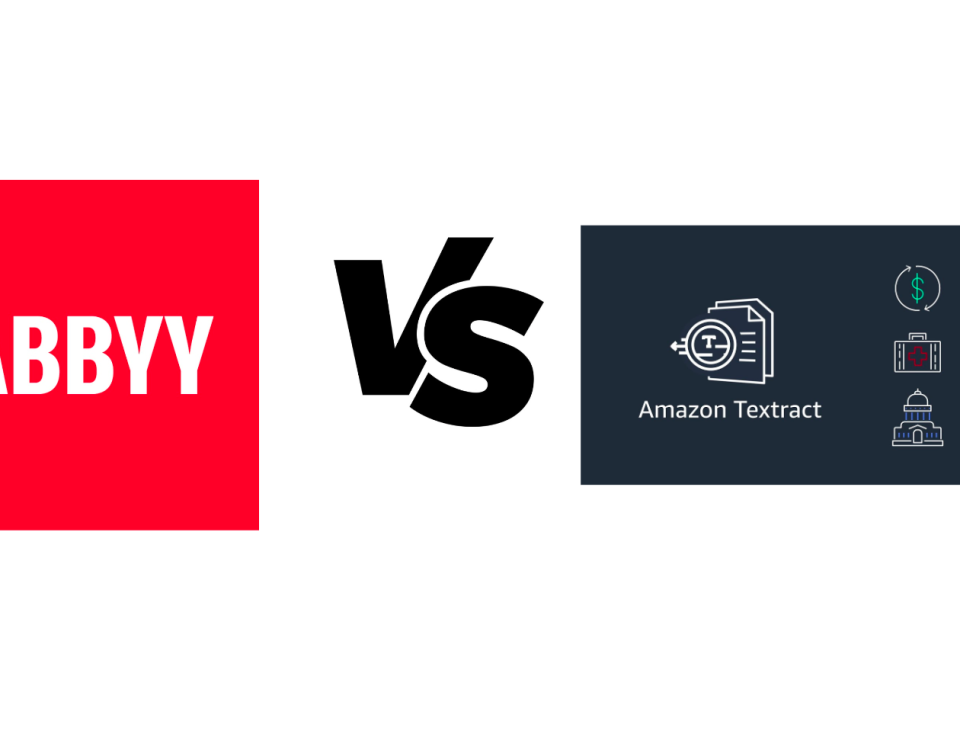
Windows 11 AI Gets OCR Technology for Enhanced Camera and Snipping Tool
September 4, 2023
Healthcare Industry OCR Integration: Transforming Healthcare Operations
September 6, 2023In the world of Optical Character Recognition (OCR) technology, open-source tools have gained significant traction due to their affordability, flexibility, and robust community support. OCR tools play a pivotal role in transforming printed or handwritten text into machine-readable text, opening doors to a plethora of applications in various industries. In this article, we will conduct an expert review of the top 6 open-source OCR tools, evaluating their features, accuracy, ease of use, and community support.
Tesseract OCR
Tesseract OCR Overview
Tesseract OCR stands as one of the oldest and most well-established open-source OCR engines. Developed by Google, it has a reputation for accuracy and versatility. Tesseract supports multiple languages and can process various image formats.
Pros of Tesseract OCR
- High Accuracy: Tesseract offers remarkable text recognition accuracy, making it suitable for a wide range of applications.
- Community Support: With a robust user community, Tesseract receives regular updates, bug fixes, and language model improvements.
- Language Support: It supports over 100 languages, making it a global choice.
Cons of Tesseract OCR
- Steep Learning Curve: Tesseract’s extensive features can be overwhelming for beginners.
- Lack of User-Friendly Interface: It primarily operates through the command line, which may not be suitable for all users.
GOCR
GOCR Overview
GOCR is an open-source OCR engine designed for simplicity and ease of use. It focuses on converting printed text into machine-readable formats and is suitable for basic OCR needs.
Pros of GOCR
- User-Friendly: GOCR is known for its straightforward interface, making it accessible to users with minimal technical knowledge.
- Lightweight: It is a lightweight OCR tool, making it efficient for simple OCR tasks.
- Open Source: GOCR is actively maintained as an open-source project.
Cons of GOCR
- Limited Features: GOCR may not be suitable for complex OCR tasks or documents with intricate layouts.
- Lower Accuracy: It may not match the accuracy of more advanced OCR engines like Tesseract.
OCRopus
OCRopus Overview
OCRopus is an OCR system developed by Google that leverages the power of Tesseract OCR while providing a user-friendly interface for document processing.
Pros of OCRopus
- Integration with Tesseract: OCRopus integrates seamlessly with Tesseract OCR, combining the accuracy of Tesseract with a user-friendly interface.
- Document Layout Analysis: It offers robust document layout analysis, making it suitable for handling complex documents.
- Parallel Processing: OCRopus supports parallel processing, enhancing efficiency for batch processing tasks.
Cons of OCRopus
- Resource Intensive: OCRopus can be resource-intensive, requiring substantial computing power for large-scale processing.
- Steep Learning Curve: While more user-friendly than Tesseract alone, it still may pose challenges for beginners.
CuneiForm
CuneiForm Overview
CuneiForm is an open-source OCR engine developed by Cognitive Technologies. It specializes in recognizing printed Cyrillic and Latin text and supports multiple languages.
Pros of CuneiForm
- Cyrillic Language Support: CuneiForm excels at recognizing Cyrillic text, making it a valuable tool for users dealing with such languages.
- Batch Processing: It offers batch processing capabilities, suitable for automating large-scale OCR tasks.
Cons of CuneiForm
- Limited Language Support: While strong with Cyrillic languages, CuneiForm may not perform as well with non-Cyrillic languages.
- Less Documentation: CuneiForm lacks extensive documentation compared to some other OCR tools.
GImageReader
GImageReader Overview
GImageReader is a graphical frontend for the Tesseract OCR engine, designed to simplify the OCR process with an intuitive user interface.
Pros of GImageReader
- User-Friendly Interface: GImageReader provides a user-friendly graphical interface, making it accessible to a wider audience.
- Multi-Platform: It is available for Windows, Linux, and macOS, ensuring compatibility with various operating systems.
Cons of GImageReader
- Limited Features: It may not offer the advanced features found in OCRopus or Tesseract alone.
- Dependency on Tesseract: GImageReader relies on Tesseract OCR, so its capabilities are tied to Tesseract’s performance.
EasyOCR
EasyOCR Overview
EasyOCR is a Python-based open-source OCR library that aims to provide a simple and intuitive OCR solution for developers.
Pros of EasyOCR
- Python Integration: EasyOCR is easy to integrate into Python applications, making it a convenient choice for developers.
- Pre-trained Models: It comes with pre-trained models for various languages, simplifying the setup process.
- Customization: Developers can fine-tune and customize models to suit specific requirements.
Cons of EasyOCR
- Limited Language Support: While it supports several languages, EasyOCR may not cover as many languages as Tesseract.
- Resource Requirements: For large-scale processing, EasyOCR may require significant computational resources.
Conclusion
Selecting the right open-source OCR tool depends on your specific needs and technical expertise. Tesseract OCR, with its exceptional accuracy, remains a top choice for many. GOCR and GImageReader offer simplicity and ease of use for basic tasks, while OCRopus provides advanced features for complex documents. CuneiForm shines in recognizing Cyrillic text, and EasyOCR is a developer-friendly option.
Consider your project requirements, available resources, and desired level of customization when choosing the best open-source OCR tool for your needs. With the thriving open-source community, you can find ongoing support and enhancements for these tools, ensuring reliable OCR solutions for your document processing tasks.


